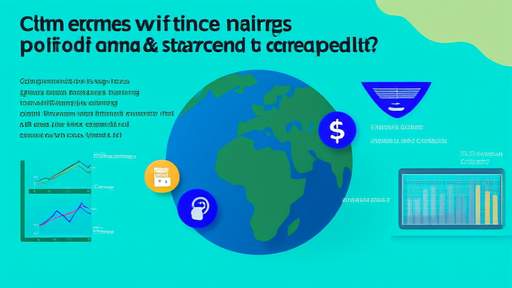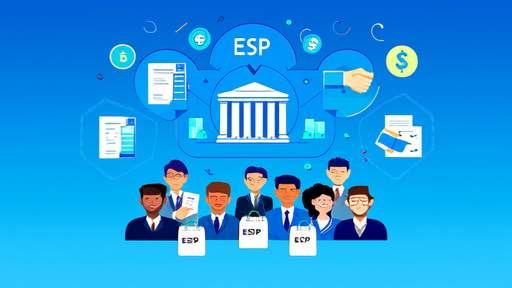Weather Derivatives in Agricultural Insurance: A Financial Shield Against Nature’s Whims
The intersection of finance and agriculture has long been a focal point for innovation, particularly in mitigating the risks posed by unpredictable weather patterns. One of the most significant advancements in this space is the application of weather derivatives within agricultural insurance. These financial instruments, initially designed for energy and utility sectors, have found a critical role in stabilizing farm incomes and ensuring food security. Unlike traditional insurance, which compensates for actual losses, weather derivatives pay out based on predefined weather metrics, offering a faster and more transparent risk management tool.
The Mechanics of Weather Derivatives
Weather derivatives function as contracts tied to specific weather indices, such as rainfall levels, temperature averages, or humidity thresholds. For instance, a farmer in a drought-prone region might purchase a derivative that triggers a payout if rainfall falls below a certain level during the growing season. These contracts are typically traded over-the-counter (OTC) or on exchanges like the Chicago Mercantile Exchange (CME), providing liquidity and standardization. The payout structure is objective, relying on verifiable data from weather stations or satellites, eliminating the need for cumbersome claims assessments.
The appeal of weather derivatives lies in their flexibility. They can be tailored to cover a wide range of weather risks, from frost damage to excessive heat, and can be structured as swaps, options, or futures. This adaptability makes them particularly useful in regions where traditional crop insurance is either unavailable or prohibitively expensive. By decoupling payouts from actual crop losses, they also reduce moral hazard—a perennial issue in agricultural insurance where farmers might neglect crops after securing coverage.
Bridging Gaps in Traditional Agricultural Insurance
Traditional agricultural insurance often struggles with high administrative costs, delayed payouts, and the challenge of accurately assessing losses. Parametric insurance, a subset of weather derivatives, addresses these pain points by linking payouts to objective weather triggers rather than subjective loss evaluations. For example, a coffee grower in Colombia might use a temperature-based derivative to hedge against unseasonable frosts that could devastate crops. If temperatures drop below a set threshold, the derivative automatically pays out, providing immediate liquidity to offset losses.
This approach is especially valuable in developing countries, where smallholder farmers lack access to conventional insurance products. In India, where monsoons are notoriously erratic, weather derivatives tied to rainfall indices have been piloted to protect rice and cotton farmers. These programs, often backed by government or NGO subsidies, demonstrate how financial innovation can democratize risk management. The scalability of weather derivatives also makes them attractive for large agribusinesses, which can hedge against weather-related disruptions across vast supply chains.
Challenges and Limitations
Despite their promise, weather derivatives are not a panacea. Basis risk—the mismatch between the derivative’s payout and the actual loss incurred—remains a significant hurdle. A farmer might receive a payout for low rainfall, but if the deficit doesn’t critically impact their specific crops, the payout may be insufficient. Conversely, a farmer might suffer losses due to pests exacerbated by weather conditions not covered by the derivative. This disconnect underscores the need for precise index design and localized data.
Another barrier is awareness. Many farmers, particularly in rural areas, are unfamiliar with derivative instruments or skeptical of their benefits. Financial literacy programs and partnerships with local cooperatives are essential to drive adoption. Additionally, liquidity in weather derivative markets can be thin, leading to higher costs or limited availability for certain geographies or weather parameters. Regulatory frameworks also vary globally, creating complexities for cross-border implementations.
The Future of Weather Derivatives in Agriculture
Advancements in technology are poised to overcome many of these challenges. The proliferation of IoT-enabled weather stations, satellite imagery, and blockchain-based smart contracts can enhance the accuracy and transparency of weather data, reducing basis risk. Machine learning models are being deployed to refine index designs, ensuring derivatives better align with actual agricultural outcomes. In Kenya, for instance, startups are piloting mobile-based platforms that allow farmers to purchase micro-derivatives via SMS, paid out through mobile money systems.
Climate change adds urgency to these innovations. As weather volatility increases, the demand for agile risk management tools will grow. Governments and multilateral institutions are increasingly recognizing weather derivatives as a tool for climate resilience. The World Bank’s Disaster Risk Financing programs, for example, have incorporated weather derivatives to protect national agricultural sectors against catastrophic events.
Conclusion
Weather derivatives represent a paradigm shift in agricultural risk management. By leveraging financial engineering and cutting-edge technology, they offer a proactive alternative to reactive disaster relief. While challenges persist, the potential to safeguard livelihoods and stabilize food systems is undeniable. As markets mature and technology democratizes access, these instruments could become as commonplace as tractors in the farmer’s toolkit—a silent guardian against the caprices of nature.

By /Jun 3, 2025

By /Jun 3, 2025

By /Jun 3, 2025

By /Jun 3, 2025

By /Jun 3, 2025

By /Jun 3, 2025

By /Jun 3, 2025

By /Jun 3, 2025

By /Jun 3, 2025

By /Jun 3, 2025

By /Jun 3, 2025

By /Jun 3, 2025

By /Jun 3, 2025

By /Jun 3, 2025

By /Jun 3, 2025

By /Jun 3, 2025

By /Jun 3, 2025

By /Jun 3, 2025

By /Jun 3, 2025

By /Jun 3, 2025